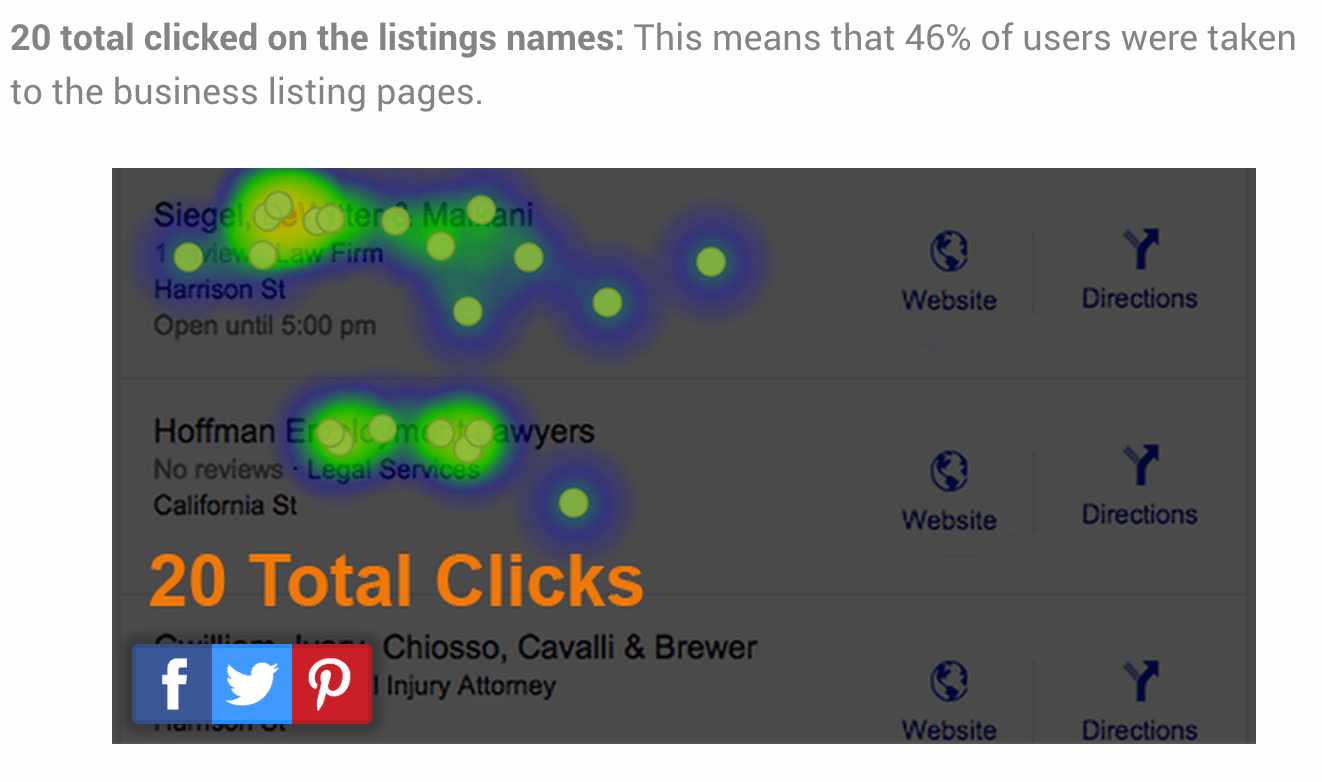What used to be known as the 7-pack is now turned into a 3-pack.
negatively affecting millions of businesses across the country.
In addition, you will also notice that Google in their infinite wisdom has removed addresses and phone numbers, as well as Google+ links. And now, when you click the name, instead of going to the business website or Google Plus page, it will redirect you to what looks like Google Maps.
WTH?
Why did Google do this?
Well we never know for sure why Google does what Google does, but I certainly can make some educated guesses.
1. Google Wants More Pay Per Click (Adwords) Revenue to Keep Investors Happy
Being included in the local search results was free adverting, and being shown on the 7 pack on page one gave 7 lucky enterprises high visibility for their business for free. That means no earnings for Google.
2. The 3-Packs Fit Perfectly on a Mobile Screen
Thus giving mobile users the same experience as desktop or laptop users.
2. The 3-Packs Fit Perfectly on a Mobile Screen
Thus giving mobile users the same experience as desktop or laptop users.
3. Google Wants Visitors to Stay Longer on Google to Generate More Revenue
Understand this, Google makes money by keeping users in the search results clicking their ads. Allowing searchers to click on links which then takes them to another website means they are no longer a captive audience for Google
Check out this case study by Casey Meraz at Juris Digital where it shows where users are clicking.

From this heat map you can see that 46% of searchers click on the business name, giving Google the opportunity to redirect them to another page on Google, thus keeping them on Google.
4. Google Wants a Piece of The Local Services Market
Other big players like Amazon are getting in the local service market game, launching Amazon Home Services. And just recently, Google invested $100 million into Thumbtack.
Given those 2 scenarios, one has to guess that Google wants a piece of the local service market, which brings me to the next point:
5. Google Is Paving the Way for More Paid For Ad Types
Google has been testing the home services ad types, which look like this:
Looks pretty close to the new local 3 pack, right? But you will note they all say "sponsored", meaning paid for. Can you smell the money now?
It is important to note that this recent change was not an algorithm change, which means if you previously enjoyed the #1, #2 or #3 position, you will still be there. What it does mean however, you must strive to be in the top 3 to still enjoy the benefit of free advertising.
So What Should You Be Doing Now?
Revisit Your Page One Ranking Strategy
- Where the map listing is concerned build your citation portfolio with pertinent local citations, and make sure your listing is correctly categorized and optimized.
- Actively drive reviews to your map listing
- Develop a social media and a content strategy. In addition to Adwords, Organic Search and Map Rankings, you can also be found on page one through Social Media, Video, Articles and Press Releases. Not only will these help to give you another shot at being on page one, they will also build enhance your business status.
- Find other ways to drive traffic to your website or blog.
In my experience, whatever Google does other search engines will follow suit. Keeping up with the constant changes can be daunting and appear a mission impossible for most business owners and marketing executives. A better way is to focus on what you do best and let online marketing specialists do the rest.
Cheers!





